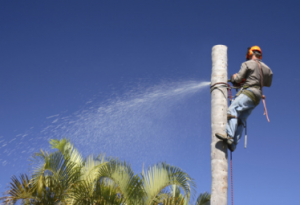Palm Tree Extraction – Costs, Methods, and Hazards
If you are in California and have decided to remove a palm tree extraction, you may be wondering how much it costs. This article will cover palm tree removal costs, methods, and hazards. In addition, we will discuss the chemical composition of palm tree raw materials. Continue reading to learn more about palm tree extraction. Listed below are some of the most common methods. You can also read more about palm tree health. Continue reading to learn more about palm tree removal costs in California.
 Cost of palm tree removal in California
Cost of palm tree removal in California
In California, palm tree removal costs vary depending on the variety. For example, a 35-foot to 60-foot palm tree will cost between $650 and $750. Larger poplars, such as those that reach 90 to 115 feet, can cost up to $1,100 or more. To avoid getting charged extra, hire a professional to do the work. Here are some tips for hiring the right palm tree removal company
The height of the palm tree is the most crucial factor affecting the price. Palm trees may be tall enough to require professional help, and their height and accessibility may make them more challenging to remove. If you are looking for a low-cost but reliable palm tree removal service, check out Overstock.com and Lowes, which offer free shipping and store pickup. Many of these companies also offer easy returns. However, be sure to shop around before you decide to hire a palm tree removal service.
Methods of palm tree extraction
When removing a palm tree, you can try a few different methods. These include hand-chopping, chainsawing, or stump grinding. Palm trees can have a shallow root system, and stump grinding can eliminate the need to dig out the roots. Using a stump grinder can help minimize the size of the stump, and it can also reduce the risk of re-growing roots. For stump grinding, you can hire a machine at a hardware store and push it from behind. Grinding the stump will reduce it to a small number of wood chips. Alternatively, you can also try decomposing the stump, which will help with the process.
The main problem with this method is the high temperature required, which dramatically increases oxidation risks. In addition, high-temperature sterilization increases the risk of oxidation, decreasing the extracted oil’s bleaching capacity. Over-sterilization can result in poor bleaching ability and reduced protein content in the press cake. As a result, it’s best to avoid over-sterilization if possible.
Hazards of palm tree removal
There are numerous hazards associated with palm tree removal, especially for those palms close to power lines. For example, falling palm fronds can strike power lines, starting fires. SCE will remove 11,000 palm trees from properties in the next two years. However, palm tree trimming is a cheaper alternative, and homeowners should still take precautions before hiring a contractor to perform the work. Read on to learn more about the hazards of palm tree extraction.
Chemical composition of palm tree raw materials
The chemical composition of palm tree raw materials varies according to their origin and species. Generally, the biomass comprises cellulose, hemicelluloses, lignin, and inert ash. Oil palm fronds are particularly rich in a-cellulose and holocelluloses, whereas eucalyptus fronds have a higher lignin content of 22%.
Dark orange oil with high carotenoids and anthocyanins is extracted from the oil palm. Crude palm oil has around 500-700 ppm of carotenoids, though these levels vary depending on the refining conditions and the oil palm species. Phytosterols are present as free molecules and esterified fatty acids. Therefore, they have the highest concentration of natural carotenoids.
Insects that damage palm trees
Thrips, a type of caterpillar, are often a common problem during palm tree extraction. This insect has a small body that may be less than a sixteenth inch long. They resemble worms with legs and are often black, brown, or yellow. A biological insecticide or soapy water solution can be used to treat insects. Thrips are not harmful to humans but can seriously damage palm trees.
